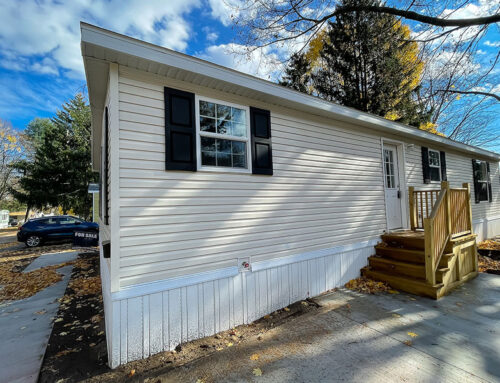For years, my friend, Shawn, has held a small multi-family building in Greenville that’s generated a decent stream of passive income for him and his family. Lately, however, he’s been wondering if he shouldn’t expand his portfolio by buying more properties in some of the other neighborhoods around town. Since I became a real estate investor a decade or so ago, buying in Jersey City has almost always produced favorable returns and, I suspect, watching my real estate investing business grow has intensified Shawn’s interest. So when he asked me where he should buy more income property in Jersey City, I wasn’t surprised. Nor was he surprised by my answer.
Where to Income Rental Property in Jersey City
Jersey City is one of the most favored places to maintain an address in the Garden State. Unemployment is low and the average household income relatively high compared to the rest of the state. Additionally, the commute to New York is reasonable, whether you drive or take the train. Together, these factors have done well to attract Millennial buyers purchasing a home for the first time, as well as buyers and renters of all ages who are priced out of living in nearby Manhattan.
But the population of Jersey City renters, already one of the largest in the nation at more than 70%, will see the biggest upward shift in the coming year. The preference for renting versus buying is driven largely by how heavily New Jersey homeowners are taxed. Homeowners pay more in property taxes than any other state in the U.S. as well as some of the highest state and local income taxes. This makes home ownership prohibitively expensive for many residents.
And, unfortunately, the federal tax cuts recently signed by the House and Senate are not going to make things any more affordable for the average single-family homeowner. These new cuts will negatively impact what all homeowners can write off and Jersey City can expect to be hit particularly hard. Mortgage interest deductions will be limited on homes valued at or below $750,000 and state and property deductions will be capped at $10,000. These two measures could make the cost of owning a home in here unsustainable. With interest rates expected to increase as well, it’s likely that more and more families will see home ownership slip further from their financial reach.
Shawn’s interest in buying and renting out investment property, therefore, is a timely one. And Jersey City, with all it has to offer, is a great place to invest. So, here’s a peek at some of the neighborhoods we agreed hold the best opportunities for returns this year.
- The Heights. The Heights, known for its many Victorian and Edwardian homes, saw a steady increase in sales, home prices, and median price range. That’s not surprising since this family-friendly neighborhood, made up of mostly single-family homes and low-rise apartment buildings, has state-designated parks, easy access to public transportation, and a fairly low unemployment rate. Even with more homebuyers moving in, however, the majority of residents in The Heights are renters. And their numbers are likely to increase as many New Jersey families opt out of owning a home due to high home prices and even higher taxes. This means that investors have an opportunity here to accommodate the upcoming demand and diversify their portfolios with income-producing properties.
- Bergen-Lafayette. Both home prices and sales in Bergen-Lafayette have been going up in the last year and it’s reasonable to expect the same will hold true looking ahead. This centrally-located neighborhood has multiple points of access for public transportation, is experiencing a revitalization of some of its historic buildings and parks, and continues to attract both commercial and residential developers. Local job growth is also on the rise as new businesses take up shop and, with it, there’s been an uptick in population. So buying and renovating a property in this neighborhood to then rent out, remains a pretty good investment model to follow. If the rising home prices persist while the tax incentives for homebuyers do not, this neighborhood is poised for an influx of renters.
- Downtown. Downtown’s appeal, and population, continues to grow and it’s ripe for renters seeking the urban lifestyle but who cannot afford to buy. It’s home to one of the largest centers for banking and finance in the nation, as well as a diverse mix of restaurants, retail stores, galleries, museums, and entertainment–all of which make living downtown desirable. Downtown Jersey City, including the Historic Downtown area and the Waterfront, has seen rising home prices across the board. With many homebuyers now priced out of the area, buying, renovating, and selling houses here shouldn’t be the only investment strategy you take. Buy-and-hold may be the best way to invest in downtown.
The value of these three neighborhoods to real estate investors should come as no surprise. They’ve been on our radars for a couple of years now. Finding a great investment property, however, takes more than knowing which areas to bet on. It takes leads.
Your Best Bet for Knowing Where to Buy
Getting those leads can be a serious challenge for many new real estate investors—especially in Jersey City neighborhoods that hold the best potential returns. But independently owned and operated HomeVestors® franchisees have some of the best real estate lead generation tools and resources right at their fingertips. That’s why I’m a part of the nationally-recognized “We Buy Ugly Houses®” team and why my Jersey City portfolio is as strong as it is diverse.
Not surprisingly, Shawn contacted HomeVestors® to discuss his franchise potential and was buying more rental properties shortly thereafter. Future Jersey City renters will be glad he did.
Each franchise office is independently owned and operated.
Contact
"*" indicates required fields





